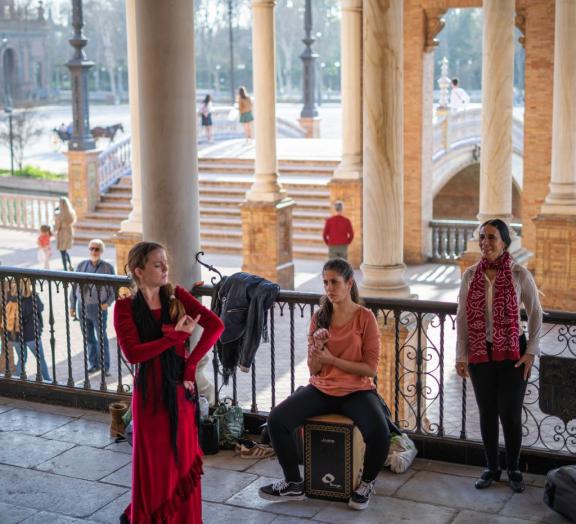

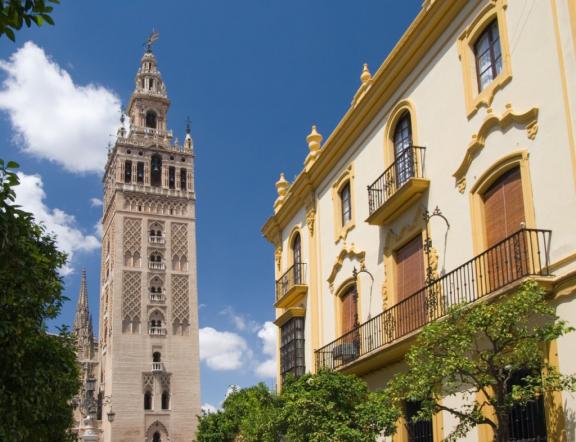
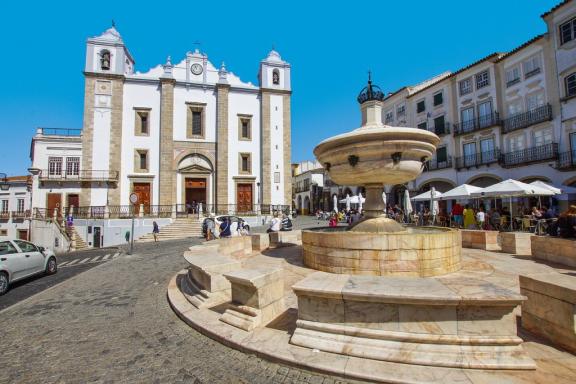
Our tips for a 9-day trip Fado and Flamenco take you to the meccas of the two characteristic music and dance styles of the Iberian Peninsula that includes Portugal and Spain. During this wonderful trip you will explore a part of Portugal and Spain. Apart from the various sights and breath-taking natural landscapes, music lovers may want to enjoy more Fado and Flamenco, the traditional music forms of the region.
The tour we describe here, starts and ends at Lisbon airport, makes its way through the Alentejo in Portugal and crosses the regions of Extramadura and Andalusia in Spain. If you want to see a lot in a short time, you will definitely love this trip with your own car or a rental car.
Don't forget your camera! Also bring your most comfortable pair of walking shoes as you will stroll through many pretty cobbled streets, some of which are very steep.
Below, you will find a summary of the itinerary for this special tour through Portugal and Spain. This itinerary also includes our suggestions of places to stay overnight. Of course, you can choose if you want to do that. Look for and make your reservation at the hotel or B&B of your choice.
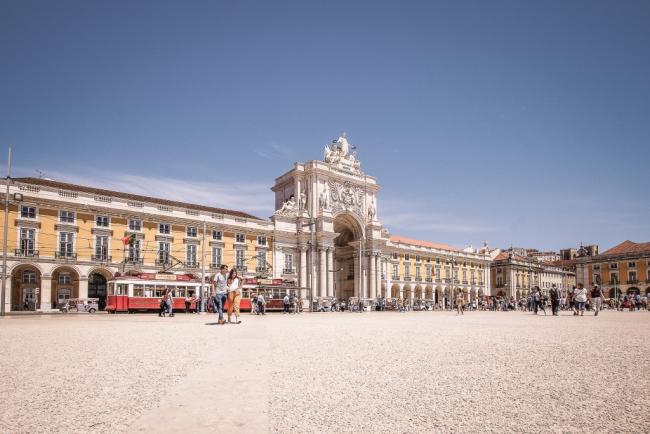
On the first day of your special theme tour 'Fado and Flamenco, Portugal & Spain', you arrive at Lisbon airport. Pick up your rental car and drive to your hotel to unpack and freshen up. Depending on the arrival time of your flight, you can visit one of the districts of Lisbon.
So put on your walking shoes, stretch your legs and enjoy Portugal's beautiful capital. Lisbon is built on seven hills so some of the streets can be quite steep. Also bear in mind that most of the streets are paved with bumpy cobblestones and sometimes, the pavements are very narrow.
After or during this walk, which puts you in the spirit of Lisbon, choose a restaurant for dinner. Plenty of choice!
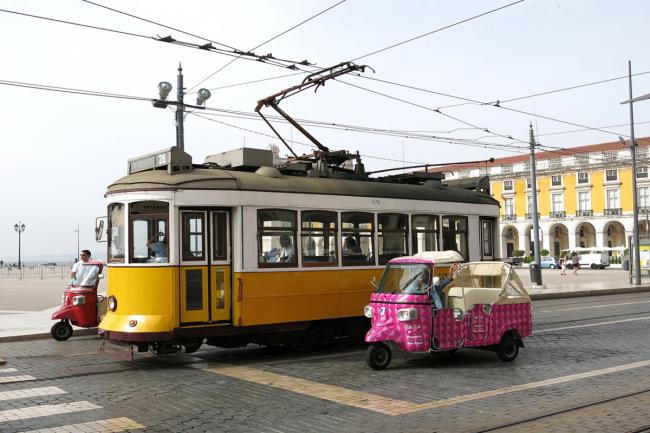
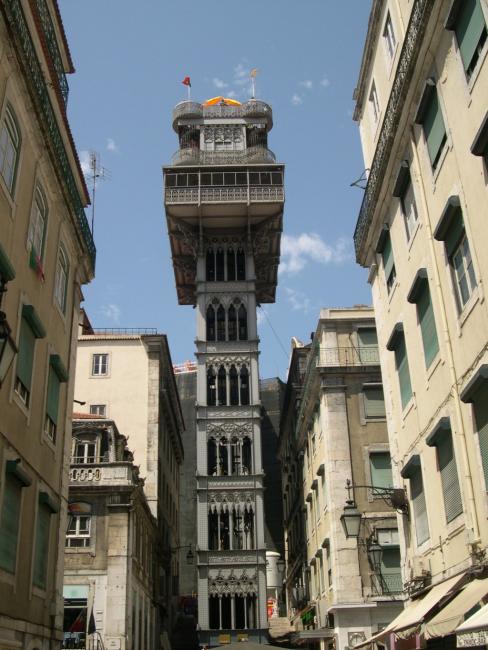
After a good night's sleep and a hearty breakfast, your 'Fado & Flamenco' tour begins with an exploration of Portugal's capital city. Lisbon is a huge, exciting city, which unfortunately you cannot see in one day. It's a cosmopolitan place and by the end of the day, you'll comprehend why Lisbon has won multiple awards as best travel destination.
Map out your walking tour in advance, so you don’t waste time and reach all the sights you want to see. As it is difficult to drive around Lisbon and park close to the sights, it’s a good idea to take public transport or a hop-on/hop-off bus, depending on your personal preferences and wishes.
Below is a list of the sights you can visit on this day.
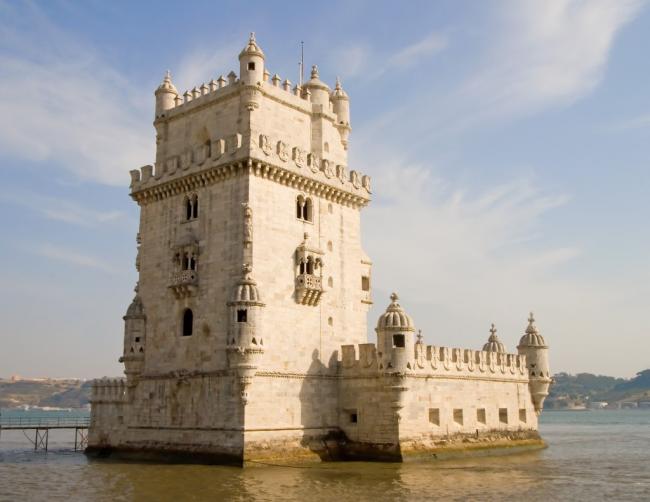
- Belèm Palace: since 1910 the residence of the Portuguese president.
- Pasteis de Belèm: during our walk from the palace to the monastery, you almost can't resist joining the queue to taste a popular and delicious Pasteis de Belèm.
- Mosteiro dos Jerónimos: Well preserved monastery that is part of the UNESCO World Heritage. The church houses the resting place of the famous Portuguese explorer Vasco da Gama, the first European to reach India by sea (15th century).
- Monument of the Discoveries: the Padrão dos Descobrimentos is located on the northern bank of the Tagus opposite the Jerónimos Monastery. This monument was built in 1960 to commemorate the 500th anniversary of the death of Prince Henry the Navigator, an important figure in Portuguese history of exploration.
- Belèm Tower: This monument, located a little further along the banks of the Tagus, is also a UNESCO World Heritage Site. The fortress was built in 1515 to guard the entrance to the channel to Lisbon. As the starting point of numerous voyages of discovery, for many sailors this monument was a symbolic last sight of their homeland.
- Pálacio Nacional da Ajuda: With its rich interior, this palace is one of Europe's most romantic buildings. We think it is one of the most beautiful palaces we have ever seen.
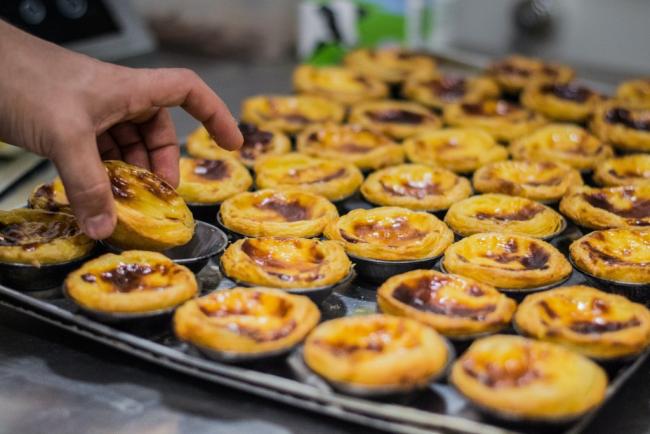
The commercial district of Baixa begins on the northern bank of the Tagus River with the Praça do Comércio, Lisbon's ceremonial entrance. This large square is surrounded by classical buildings with white and yellow facades, interrupted in the middle by an imposing triumphal arch, which provides a gateway to Rua Augusta, a popular shopping street with cosy side streets. In one of the side streets you will be surprised by the Elevador Santa Justa, a wrought iron industrial age Art Nouveau wonder.
Between all the visits we take the time to have lunch in a restaurant of your choice.
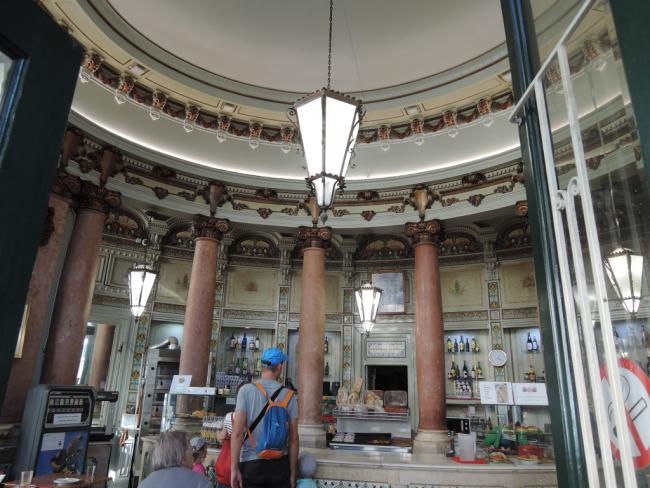
Before dinner, you will of course have the opportunity to freshen up in your hotel. Afterwards, you continue your city walk to Alfama, the oldest district of Lisbon. Among the many historical buildings, you cannot miss the São Jorge castle and the Sé (cathedral). But the most picturesque facet is undoubtedly the labyrinth of narrow streets with a surprise around every corner.
Be careful though, as the streets and pavements are narrow and a tram regularly races past you.
During your evening stroll, you can choose to dine in a typical Portuguese restaurant and then enjoy an evening of music in one of the intimate local Fado bars.
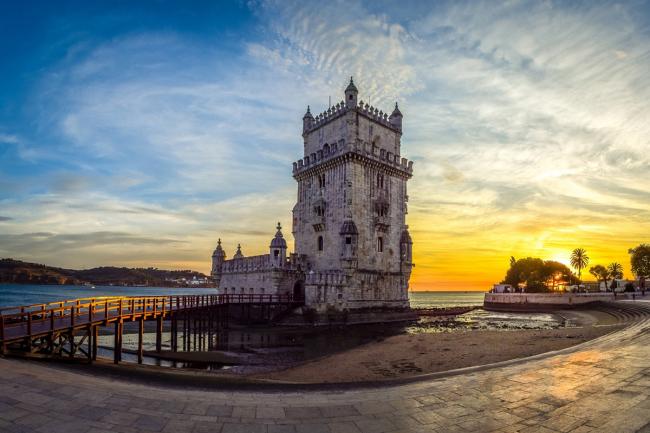
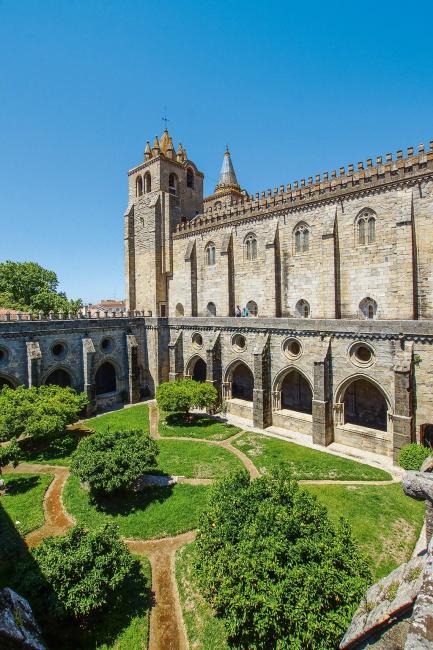
After breakfast, you’ll be saying farewell (or goodbye) to Lisbon and the romantic Alfama district, where you may have started a love affair with Fado.
Today, you continue your tour of Portugal and Spain to an equally fascinating city: Évora. To get there, you have to travel through the warmer plains of the Alentejo region. If you like, you can stop along the way at a beautiful pousada near Arraiolos for lunch. You can also take a moment to visit the tiny town, as traditional carpets inspired by Persian carpets are made here. Afterwards, you drive to Évora.
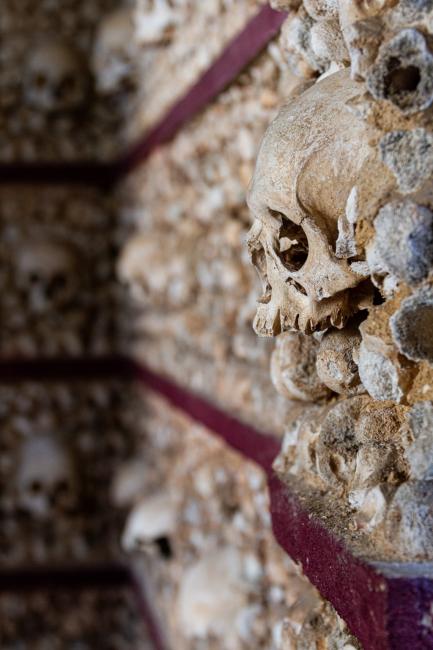
The historic city of Évora is best explored on foot. You will undoubtedly enjoy the narrow streets, squares with cosy terraces, the rich cultural heritage and the relaxed atmosphere. The entire city is recognised as a UNESCO World Heritage Site. Some highlights are: the Roman temple, the cathedral, the São Francisco church with the Capela dos Ossos (Chapel of Bones) and many more!
In the evening, enjoy a delicious dinner with local dishes and rich Alentejano wines in the restaurant of your choice.
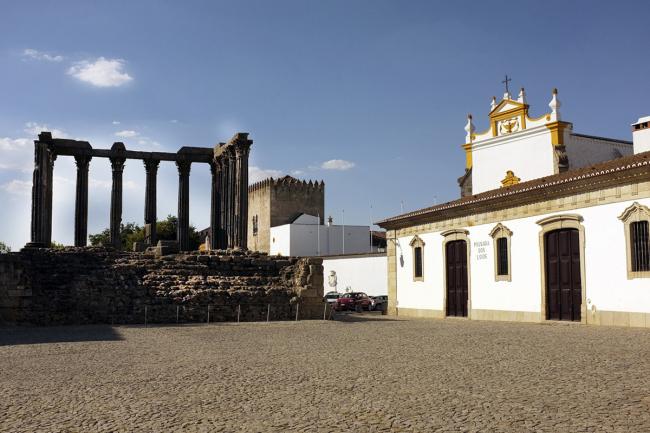
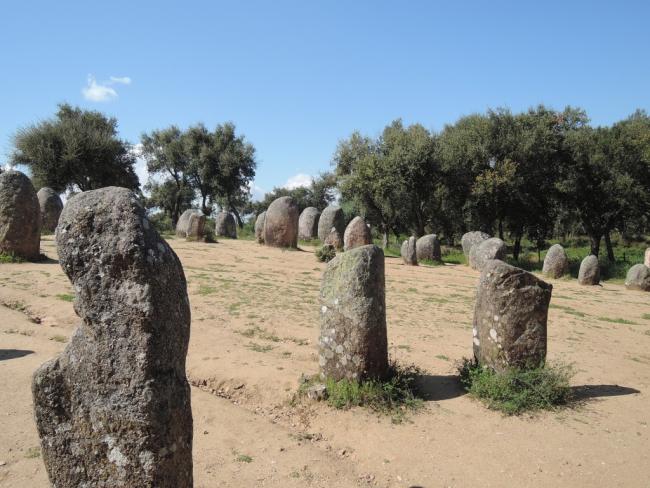
Leave your suitcase at the hotel today, because tonight you will sleep here again. After breakfast, don't forget your camera, because today several treats await you!
Like the Cromeleque dos Almendres, the largest group of menhirs on the Iberian Peninsula. These mysterious stones date back to the 6th millennium before Christ, but surprisingly enough were only rediscovered in 1966! Prepare well for the journey to these menhirs as often the signage is not very clear. But definitely worth the effort!
In case you cannot get enough of menhirs, closer to Évora you will find another smaller stone circle, Cromeleque de Vale Maria do Meio.
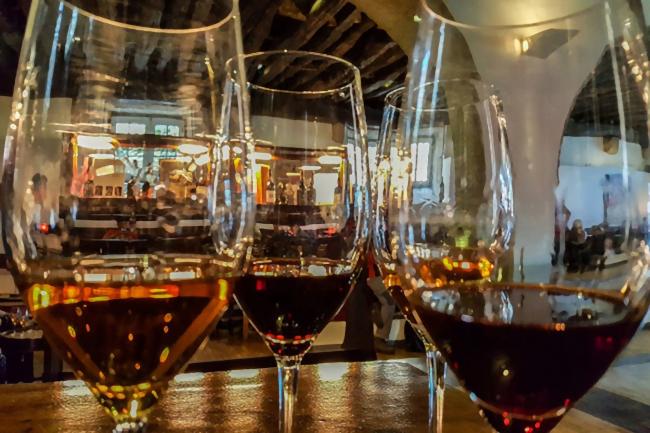
After lunch at a nearby restaurant, you can further explore the area past aqueducts, 16th-century fortresses and monasteries. Perhaps you might fancy a wine tasting at Cartuxa - Quinta de Valbom. Best to check beforehand what is and isn't possible!
After this, drive back to Évora.
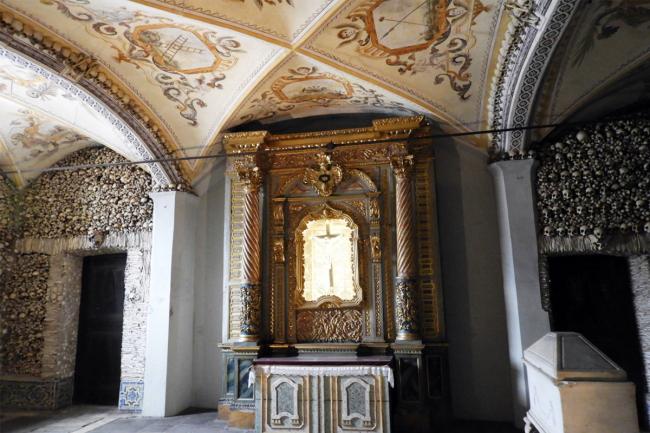
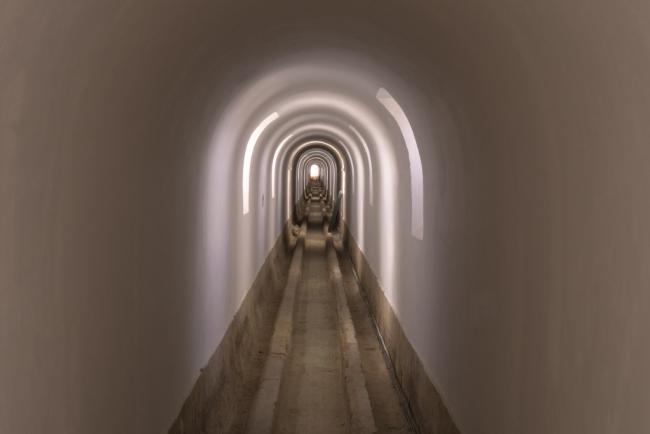
The Spanish castles and the sound of castanets are calling us, so it is high time to cross the border into Spain today!
On the way, you briefly visit the fortified town of Elvas, still on Portuguese territory but a stone's throw from the Spanish border. This town is a UNESCO World Heritage Site and played an important role in Portugal's independence and history. It was a military stronghold with medieval city walls and a colossal aqueduct with 843 arches spread over 7 km.
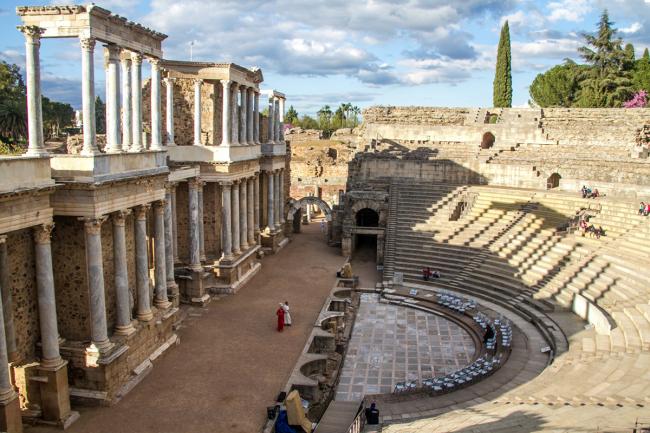
And then we are in Spain! It is an hour later here, so don't forget to adjust the time on your watch.
The first Spanish town you pass through is Badajoz. Either you stop here for lunch or you continue straight to Mérida, the capital of the Extremadura region.
Mérida was founded in 25 BC by Roman Emperor Augustus and has some of the best-preserved Roman ruins in Spain including the Roman theatre, amphitheatre, temple of Diana and the Casa del Mitreo (Roman villa).
Explore the city, maybe you would like to do some shopping or take a seat at an outdoor café and watch the world go by. That’s totally fine!
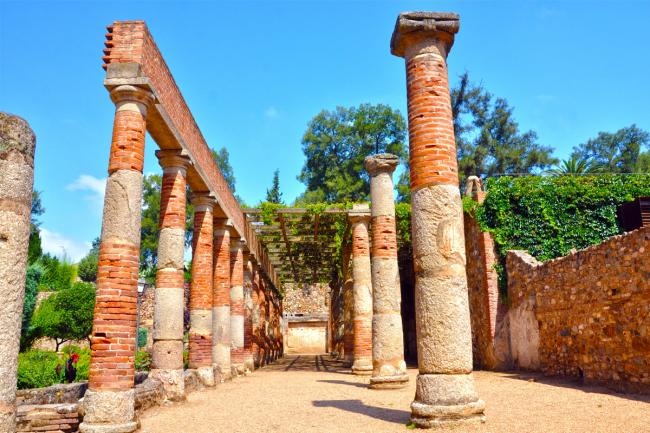
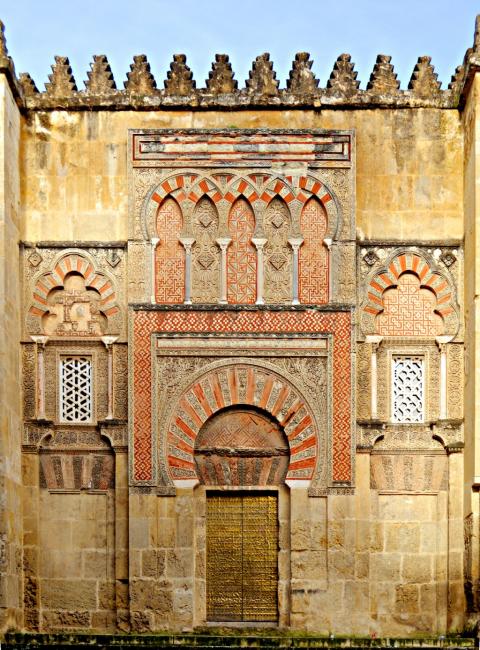
After breakfast, you continue your 'Fado and Flamenco' tour through Portugal and Spain to the old Moorish city of Córdoba on the banks of the Guadalquivir River. This beautiful medieval city has a rich history and numerous monuments. The historic centre is recognised as a UNESCO World Heritage Site.
Under the rule of the Moors, in the year 1000, Córdoba was the largest city in the world with half a million inhabitants! It was the most important financial, commercial and cultural centre of the known world. During this period, the impressive Mezquita (mosque-cathedral) with its characteristic red and white arches was built. Today, it remains one of Spain's cultural treasures.
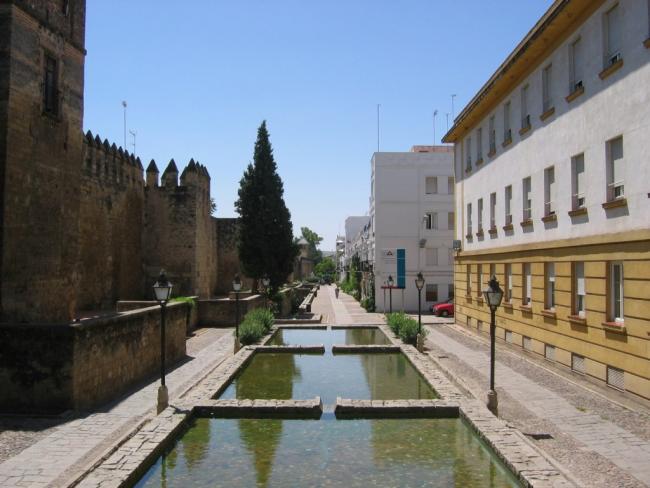
The atmosphere in the city of Córdoba is unique. Enjoy the narrow, flowery streets and picturesque houses in the Jewish quarter, the synagogue and the Alcázar de los Reyes (royal palace). And, of course, the impressive Puente Romano (Roman bridge). Stroll through the historic city centre and be charmed.
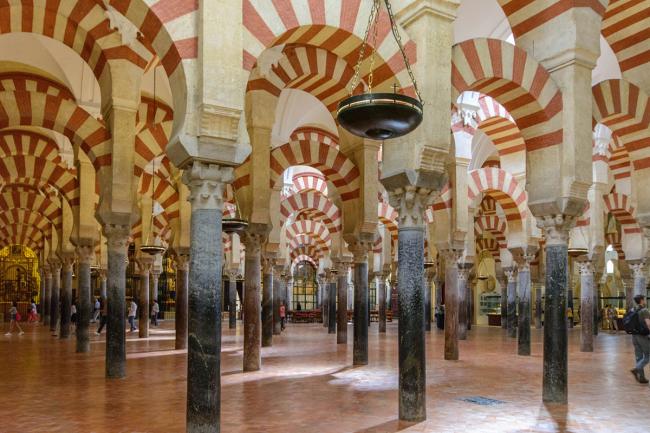
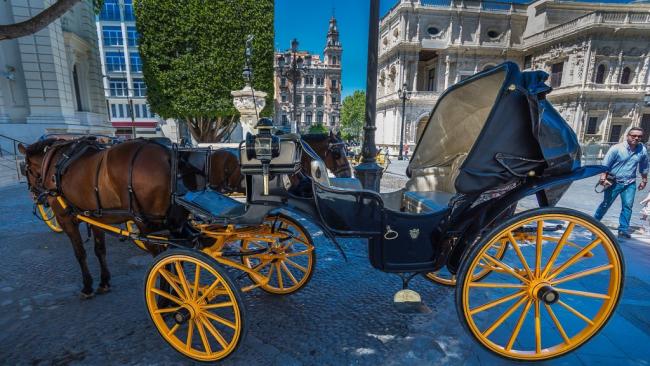
Pack your bags, because after breakfast the city of Seville is the next stop on your tour of Portugal and Spain. Seville is undeniably famous as the birthplace of flamenco. The city is also situated on the banks of the Guadalquivir River. Absorb the rich history, the atmosphere in the labyrinth of narrow streets in the oldest district of Santa Cruz and large sprawling squares elsewhere in the city. Seville is full of beautiful monuments and buildings, many of which are UNESCO World Heritage Sites.
Because there is so much to see and do in Seville, you will stay here for two days. During these two days you can visit the following:
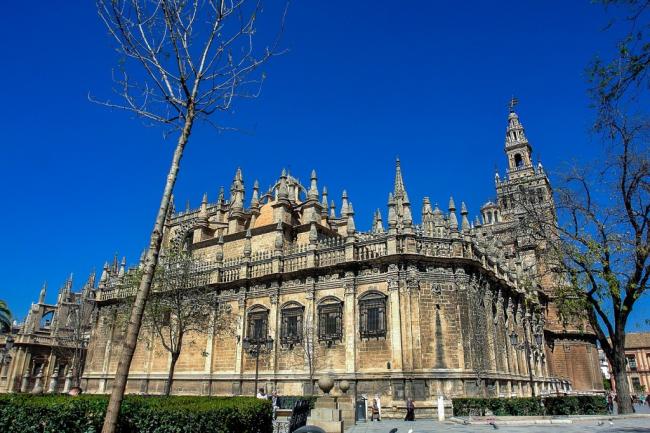
The Gothic cathedral Maria de la Sede with Giralda tower: after St. Peter's Basilica in Rome and St. Paul's Cathedral in London, the largest church building in Europe and the largest in the world in Gothic style. The Giralda, the church's bell tower, is 104.5 metres high.
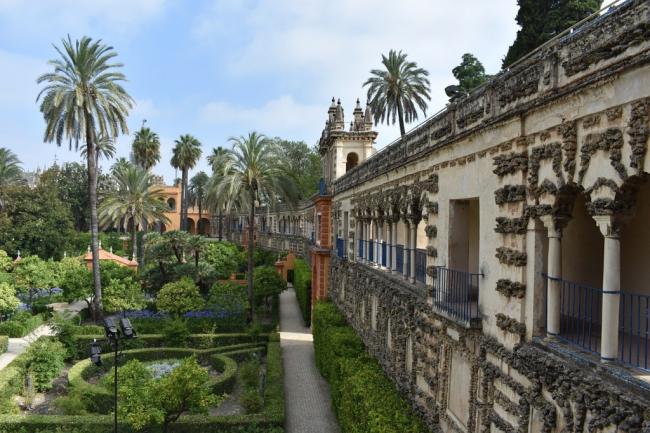
The Alcázar Real (a royal palace from the 14th century) is probably the oldest palace still in use in Europe. It is an important example of Mudejar architecture, a style strongly influenced by the Moorish culture.
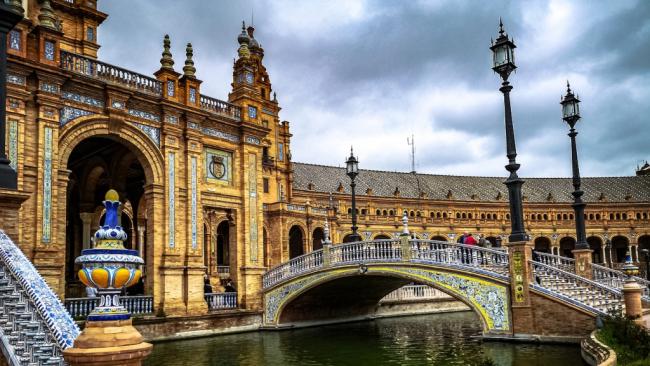
The Plaza de España in Maria Luisa Park, built for the 1929 Ibero-American Exhibition. Its shape is a semi-circle flanked by two tall towers. It is decorated with elaborate mosaics, Andalusian tiles and 52 statues representing the 52 Spanish provinces.
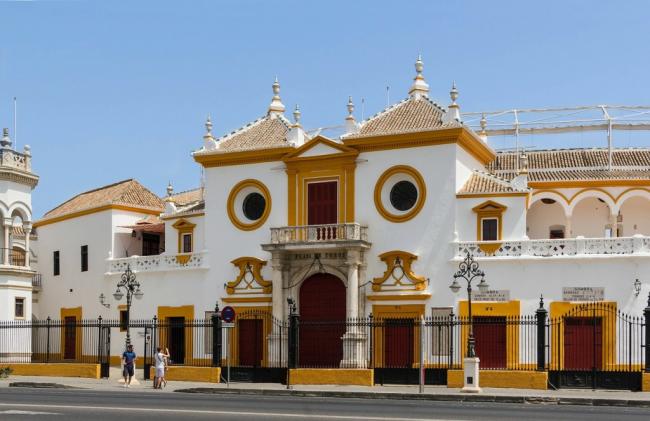
Plaza de Toros is the largest bullring in Spain and dates back to the 18th century.
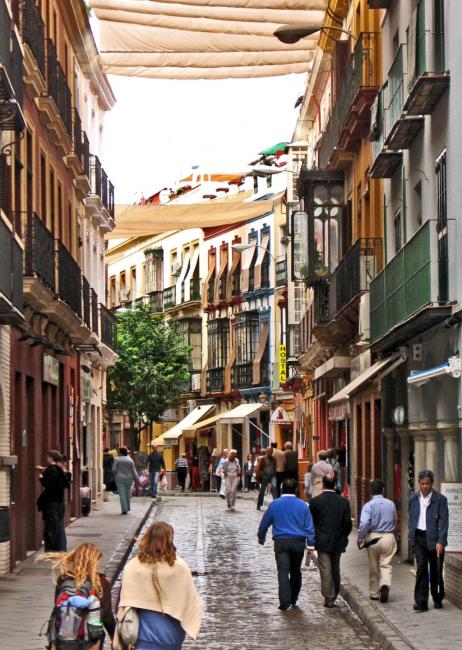
Barrio de Santa Cruz is the old Jewish quarter of Seville. This beautiful maze of old narrow streets, terraces and restaurants is very close to the cathedral.
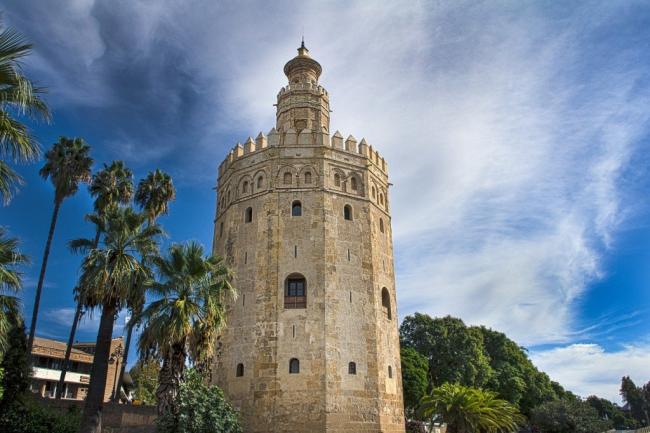
Torre del Oro (the gold tower) dates back to the 12th century. Located on the Guadalquivir River, it was part of the Moorish city walls and served as a storehouse for New World gold.
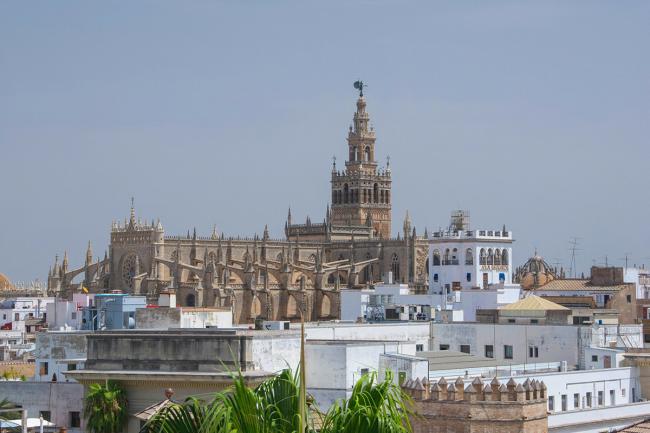
Real Fábrica de Tabacos is the old tobacco factory. The enormous neoclassical building accommodated about 10,000 (mainly female) employees. The most famous employee was Carmen, the inspiration for the opera of the same name by the French composer Georges Bizet. She was known for being able to roll cigars between her thighs! Nowadays, the factory halls are part of the University of Seville, but inside you can still feel the authentic atmosphere.
Between visits, don't forget to have lunch at an outdoor terrace (with or without sangria)!
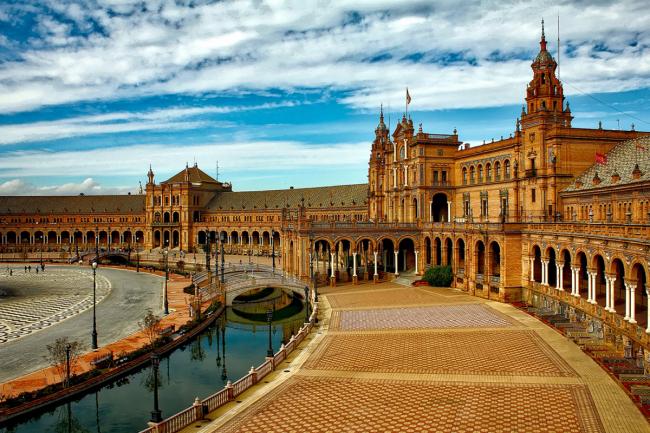
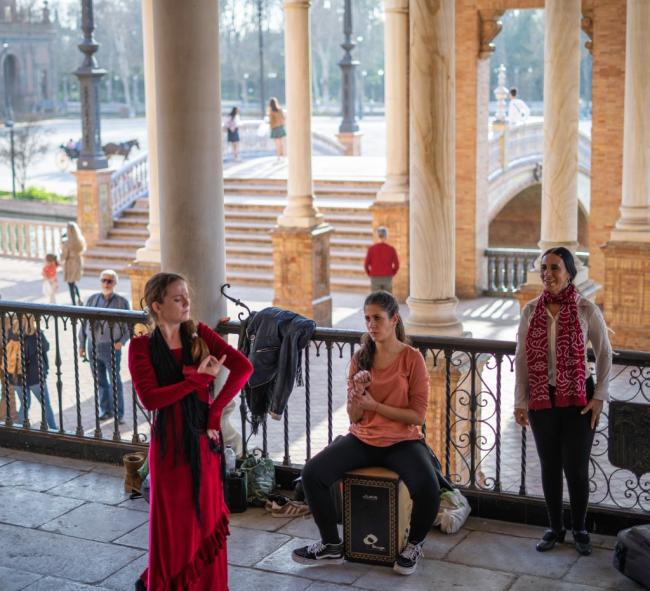
Get ready for your second day of further exploration in the atmospheric city of Seville!
As this is the last full day of your holiday, why not spend an unforgettable evening with tapas and fantastic Flamenco! Experience the magic of Flamenco with its exotic sounds, exuberant musical panache and powerful rhythms. Listen to the hypnotic sounds of the flamenco guitar and the singing accompanied by castanets, hand clapping and the delightful footwork.
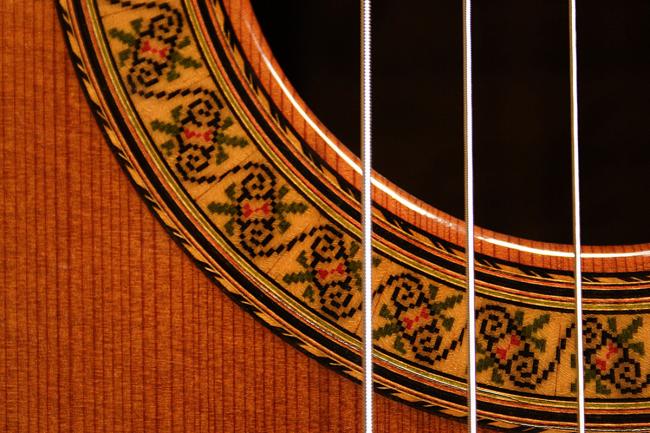
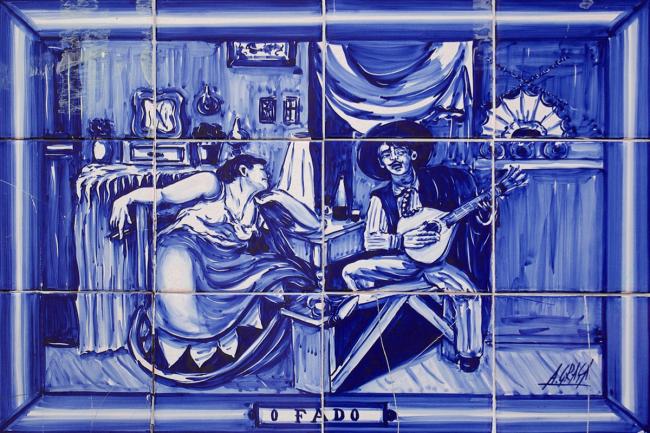
It’s time to pack your suitcase. After breakfast, you drive back to Portugal where y our 'Flamenco & Fado' themed tour will end at Lisbon airport.
Depending on the departure time of your flight, you could stop at the Portuguese city of Beja, the traditional capital of the Baixo Alentejo. Beja reveals its conflict-filled history through its imposing 13th-century castle, built on earlier fortifications by the Moors and Romans. With 197 steps, the 40-metre-high tower is the tallest in Portugal. At the top, you are rewarded with sensational views over Beja and the rolling plains below.
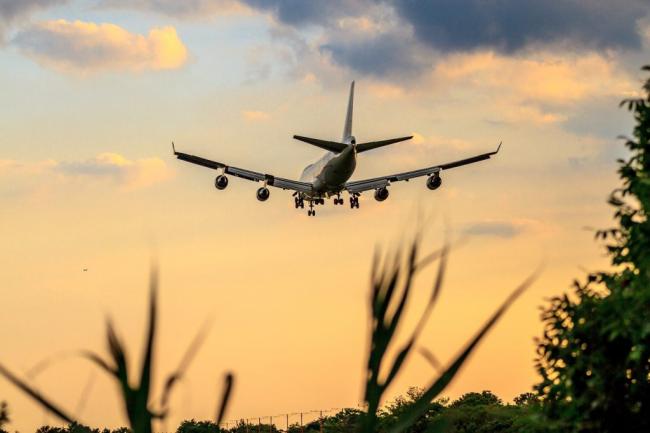
Since we cannot offer the themed tours as a service any longer, we are happy to share all these tips for free!
The services by Jinah Trans in Portugal are:
Making your reservation in advance is always necessary! Jinah Trans’ airport transfer service and day trips with private driver have become very popular over the years. Therefore, book well in advance so we don't have to disappoint you.
Airport transfers can be booked online. If you don't want to order online, send us an e-mail. Also contact us if you want to plan a day trip. We will be happy to assist you!